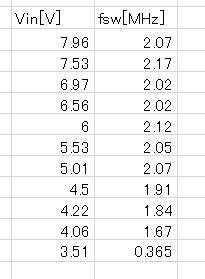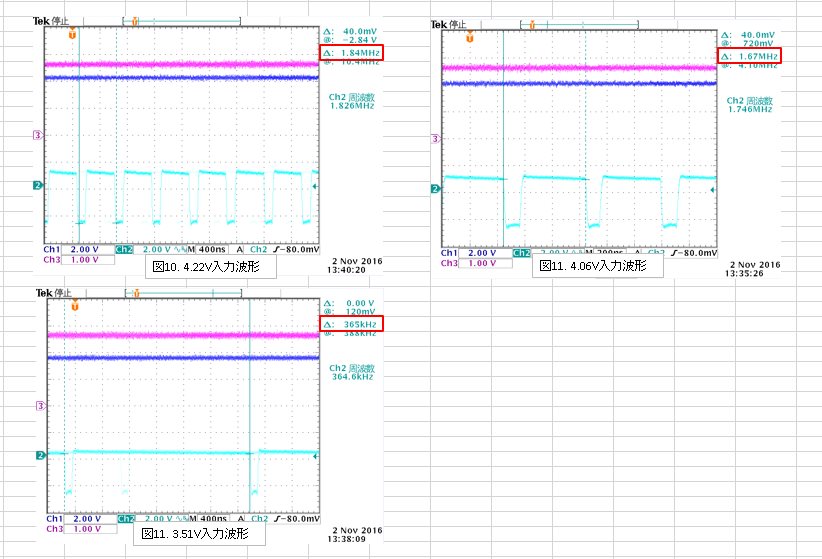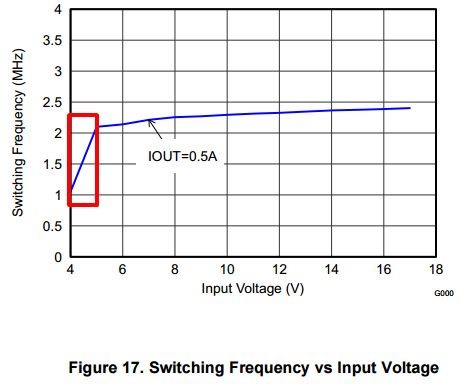Hi,
Fsw decreases when Vin is low such as following.
And I attach waveforms when fsw decreased.
I'm understanding what the TPS62170 does not move into PS mode when Vin is high because ripple current is small.
Is it correct?
Could you tell me why Fsw decreases when Vin?
Best Regards,
Kuramochi





